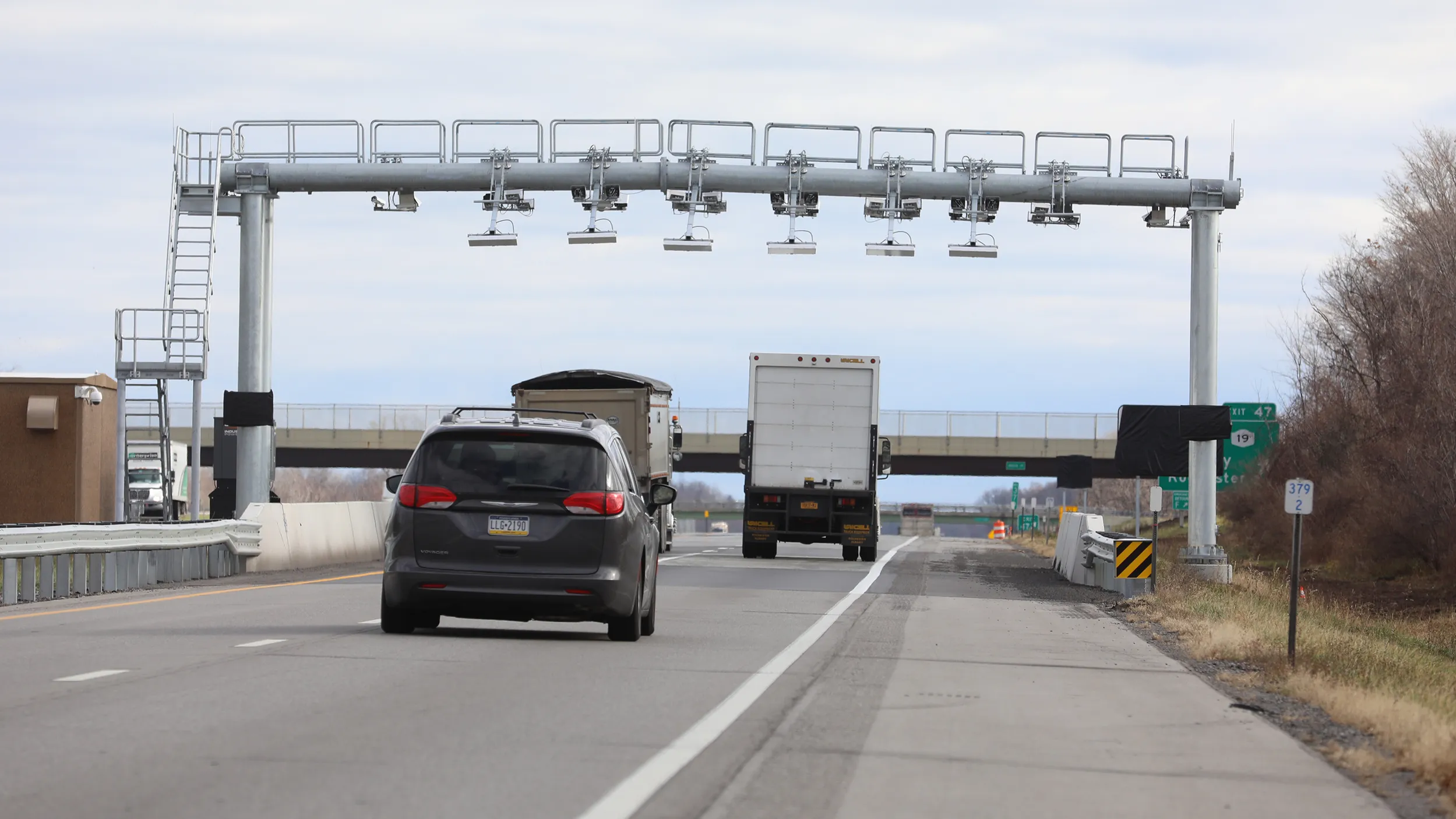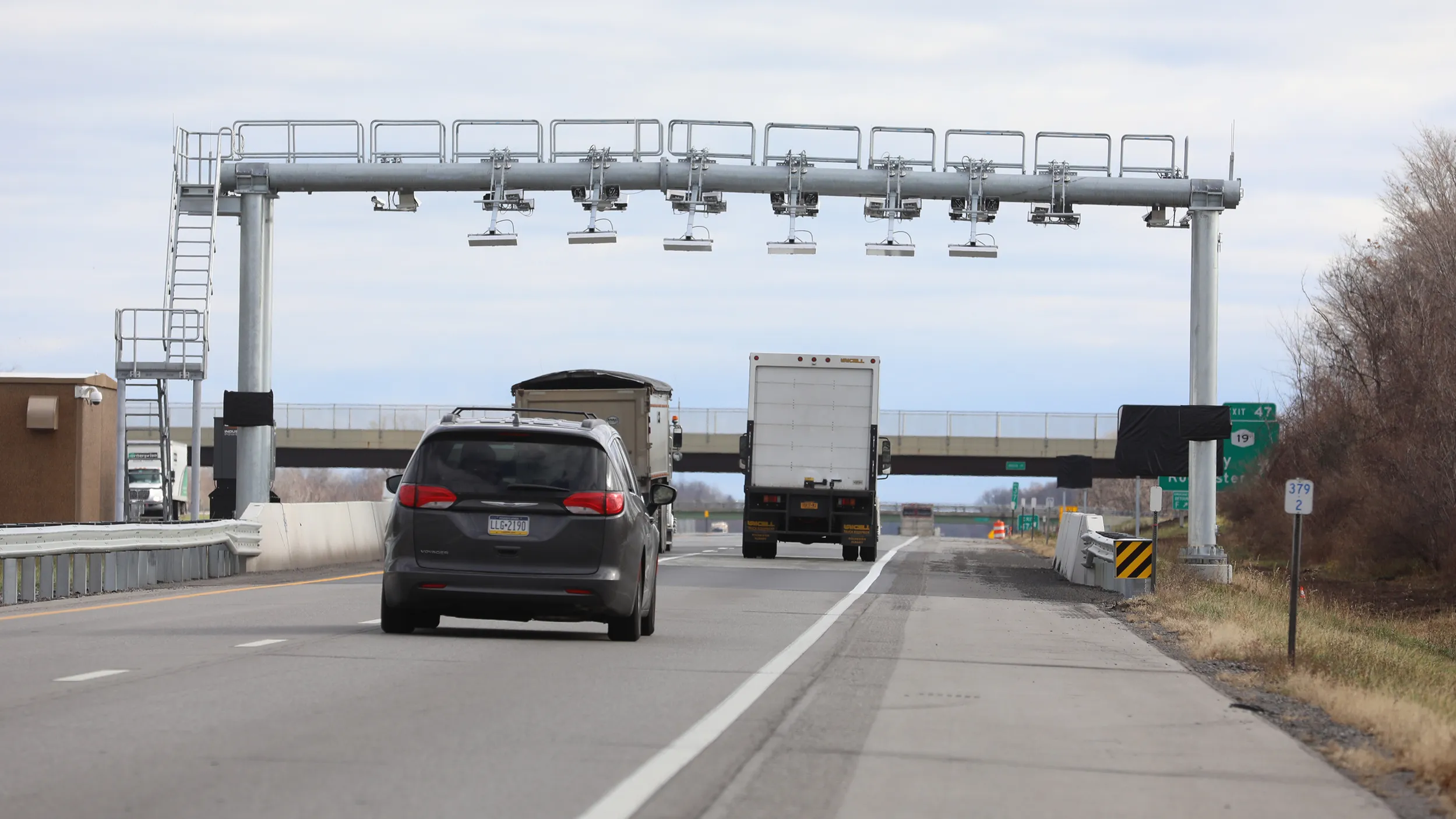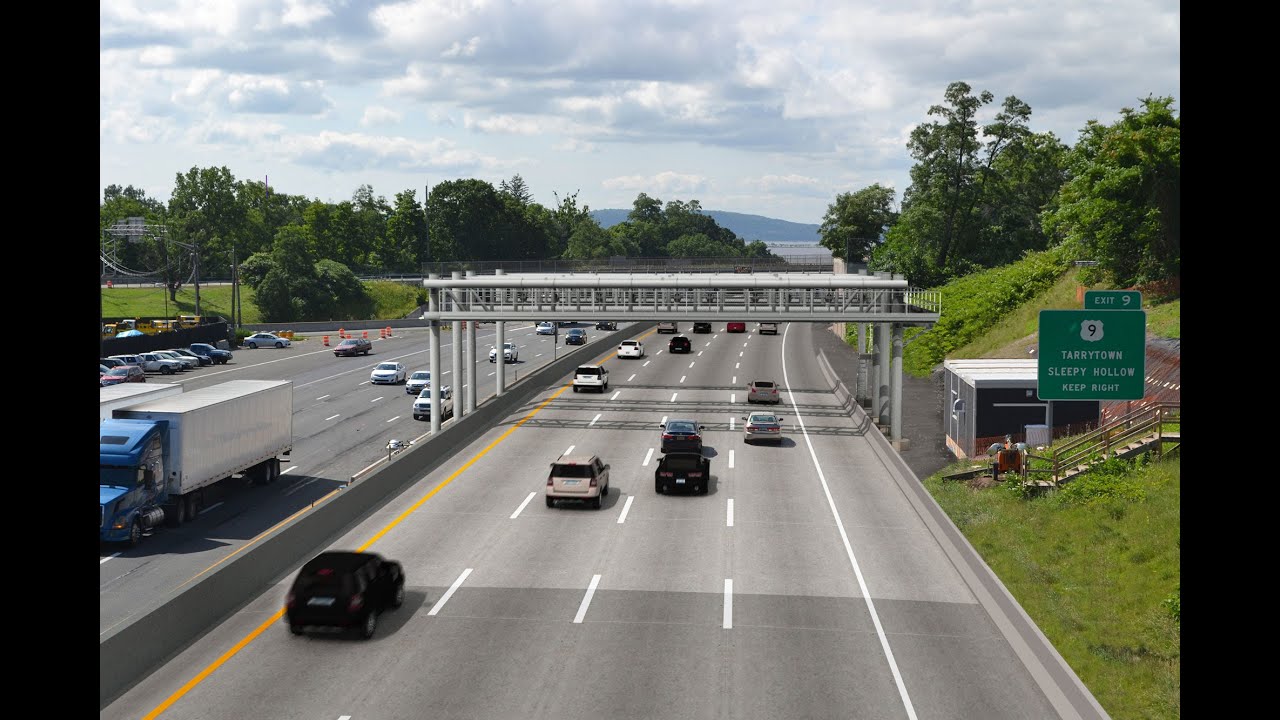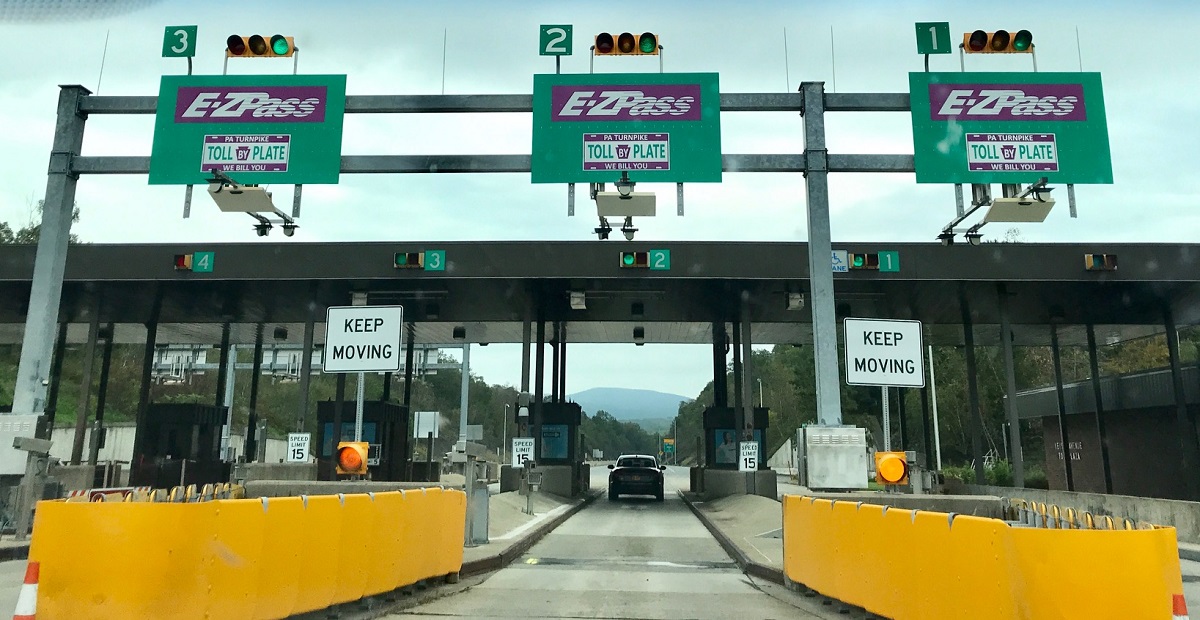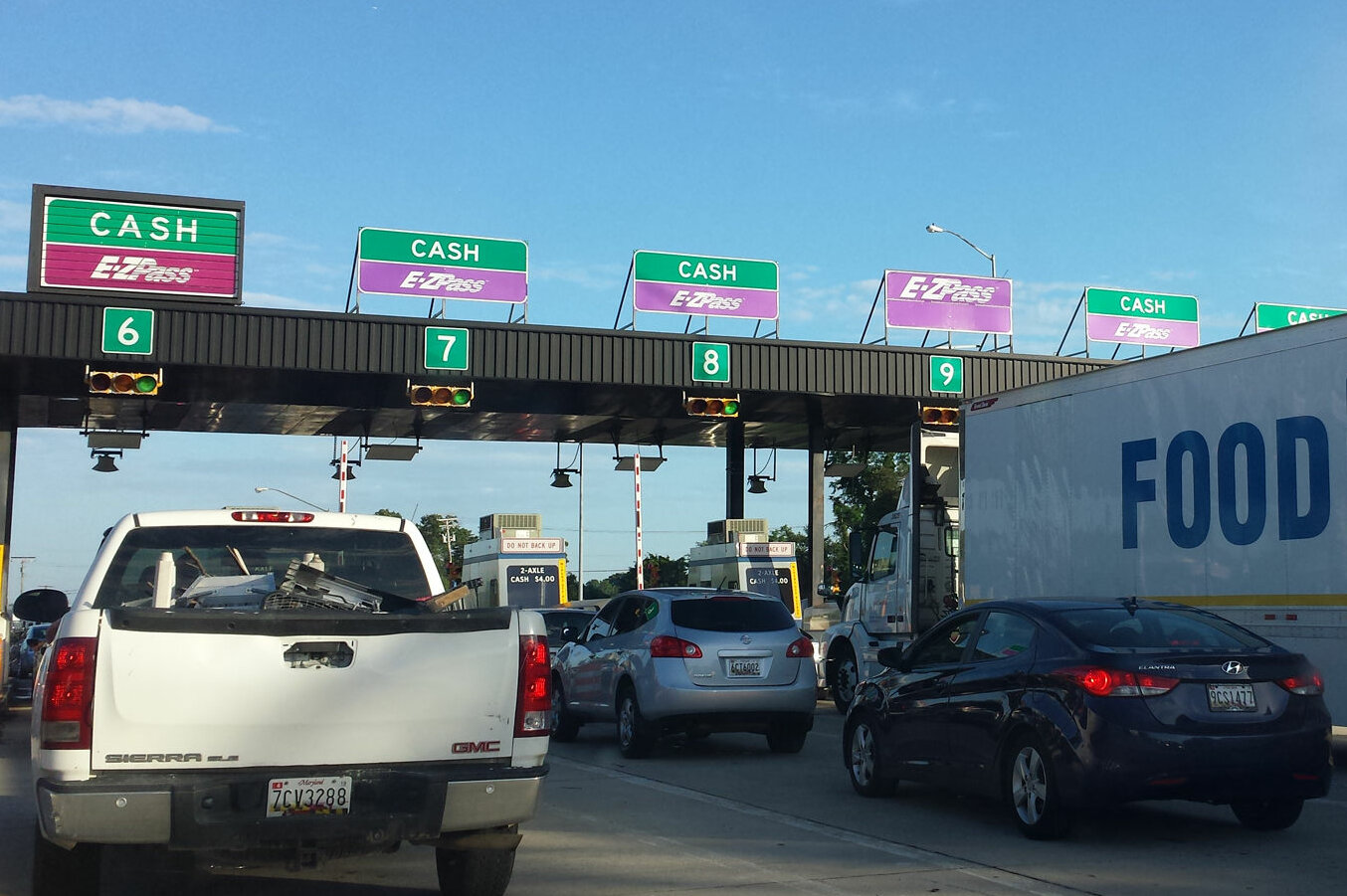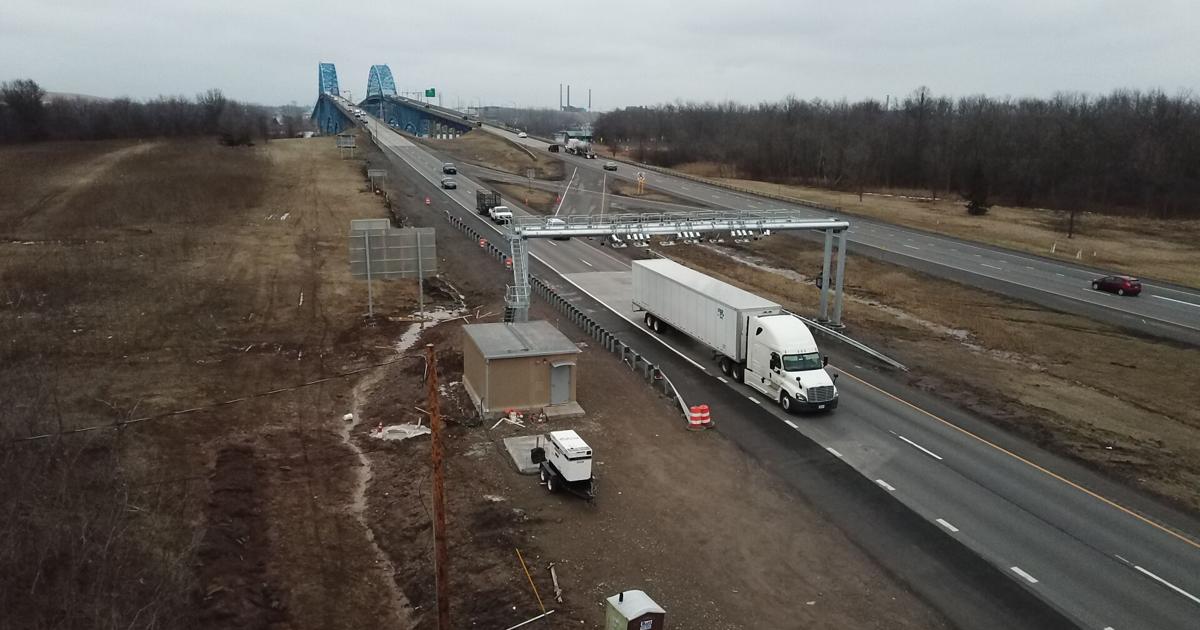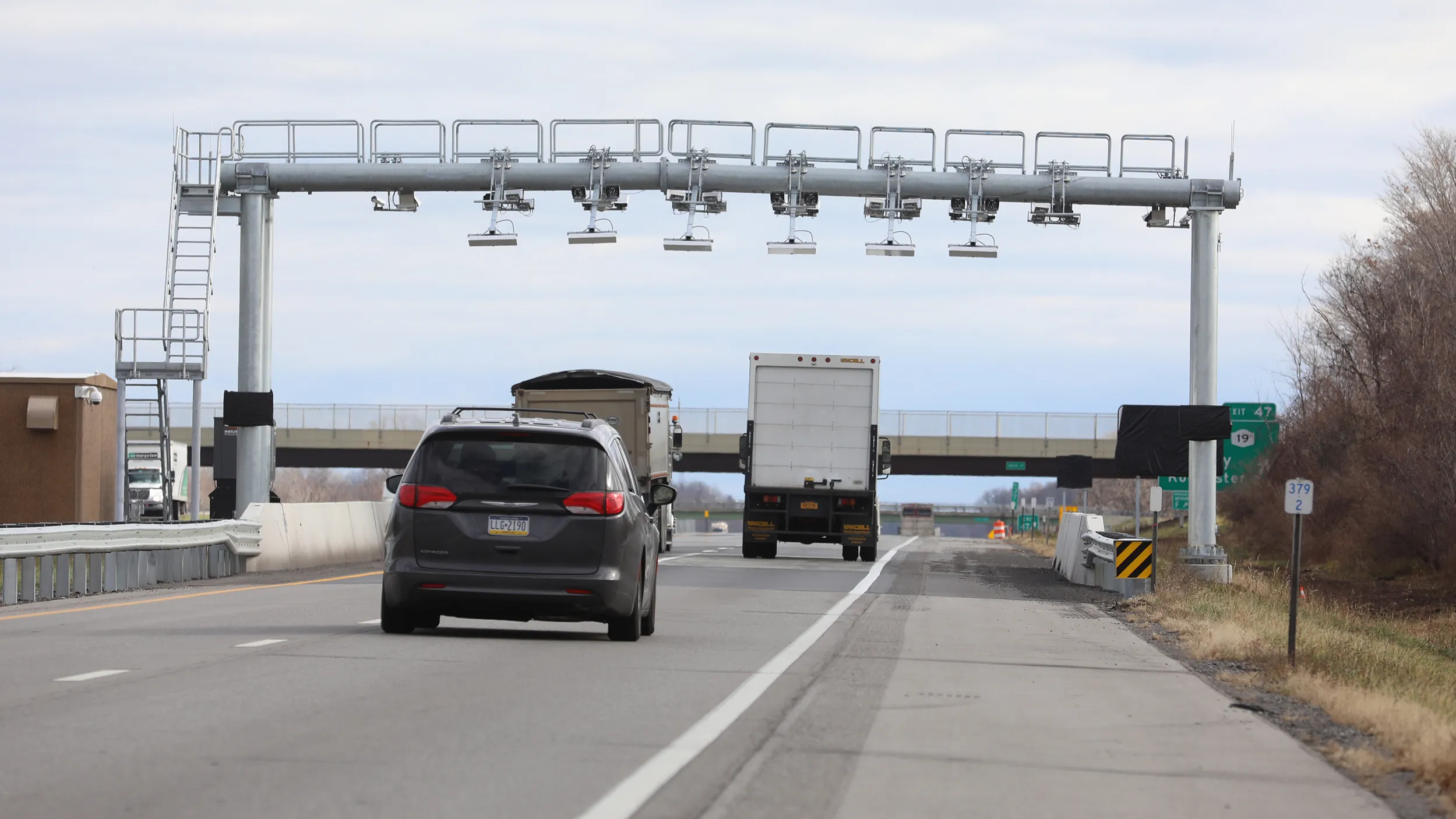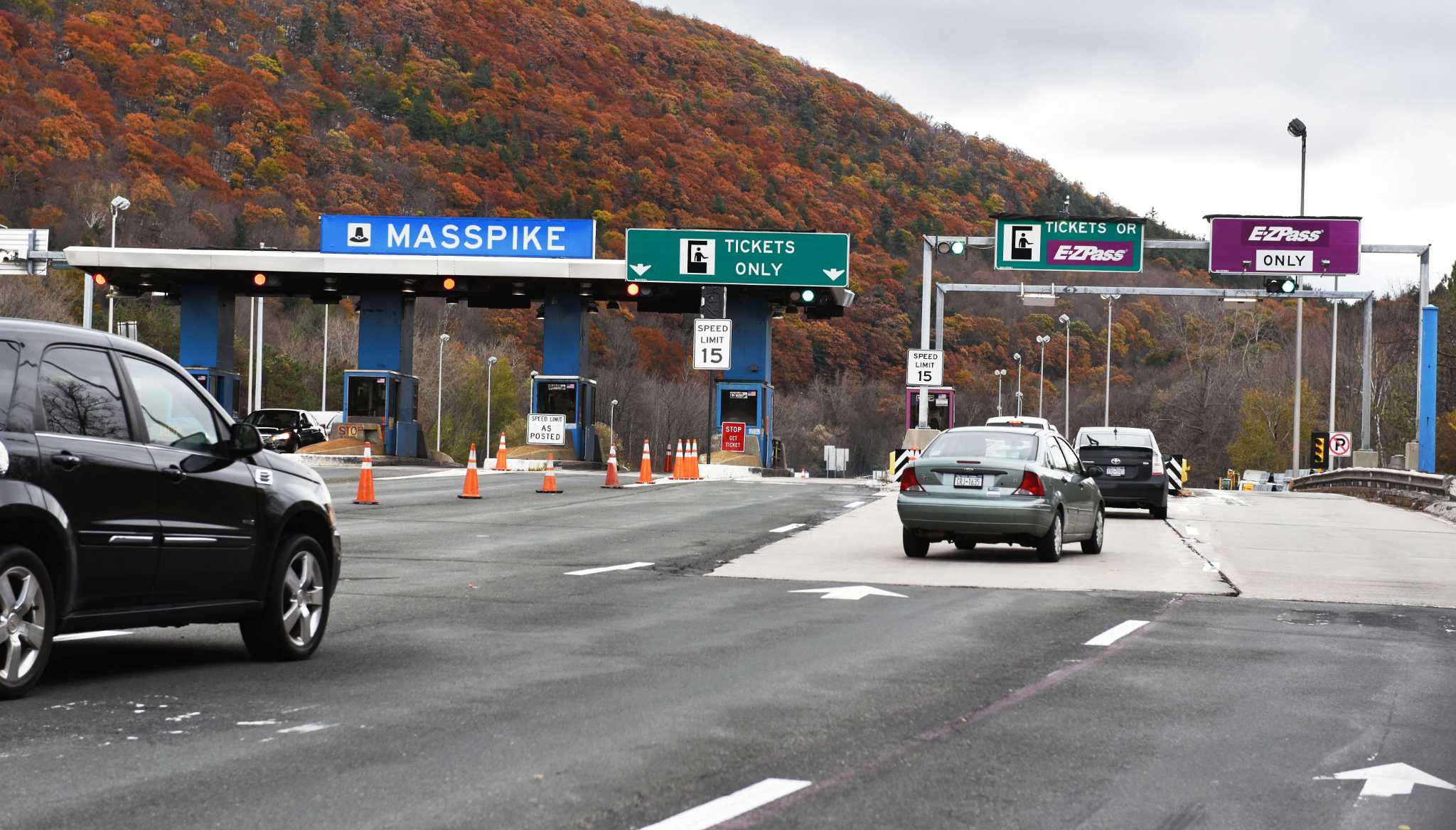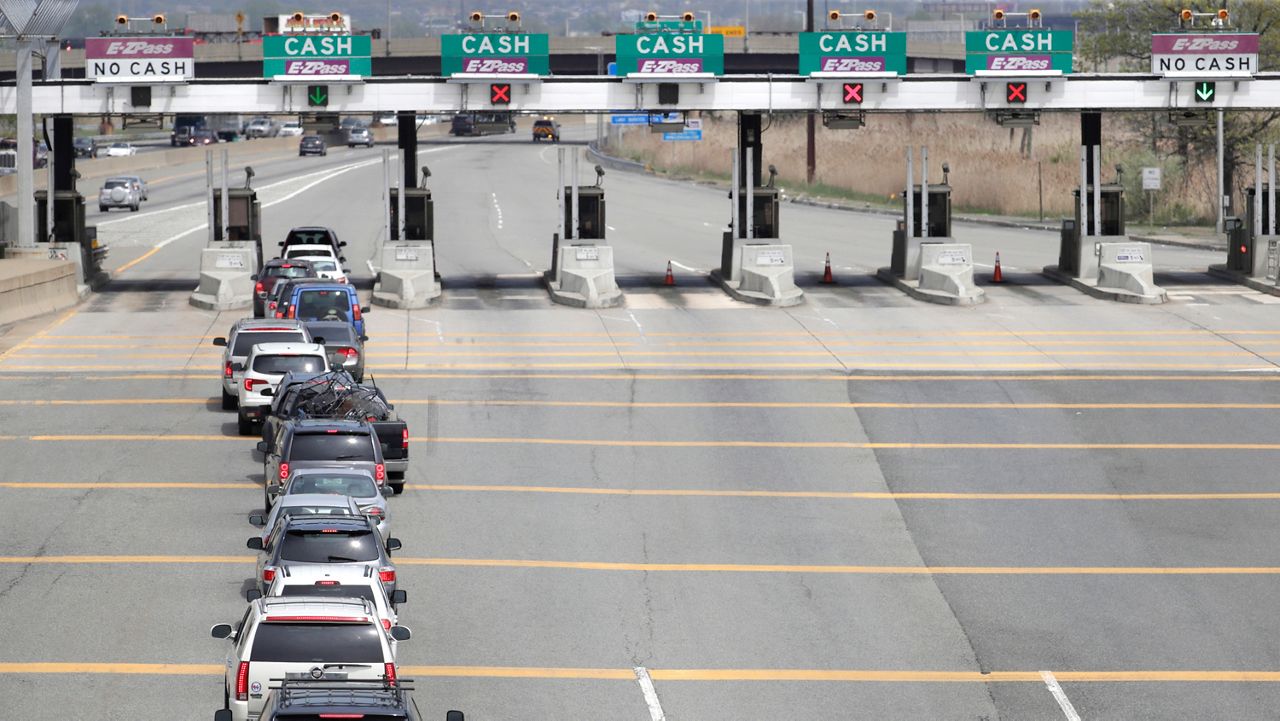Introduction
As technology continues to advance, traditional methods of toll collection are being phased out in favor of cashless tolls. In New York (NY), cashless tolling has become the standard for many bridges, tunnels, and roadways. But what exactly is cashless tolling, and how can you pay for it?
Cashless tolling eliminates the need for drivers to physically stop and pay cash at toll booths. Instead, tolls are collected electronically, allowing for a seamless and efficient travel experience. Through various payment methods such as E-ZPass, Tolls by Mail, mobile apps, and credit card registration, drivers can easily and conveniently pay their tolls without the hassle of carrying cash or waiting in long lines.
By transitioning to cashless tolls, New York aims to improve traffic flow, reduce congestion, and enhance overall safety on its roadways. This modern approach not only benefits drivers but also helps to streamline operations and decrease environmental impact.
In this article, we will explore the different options available for paying cashless tolls in NY. Whether you’re a frequent traveler or an occasional road user, understanding these payment methods will empower you to navigate the cashless toll collection system with ease.
What is a cashless toll?
A cashless toll is a method of collecting tolls electronically without the need for physical cash or tokens. It replaces the traditional system of toll booths where drivers would stop and pay cash to cross bridges, use tunnels, or access certain roadways.
In a cashless tolling system, vehicles are equipped with transponders or cameras capture images of license plates to identify and charge the appropriate toll. This technology allows for a faster and more efficient flow of traffic, as drivers no longer need to stop or slow down at toll booths.
With cashless tolls, toll rates are typically based on vehicle class and the distance traveled. The toll amount is automatically deducted from a prepaid account associated with the vehicle, ensuring a seamless and contactless transaction.
One of the main advantages of cashless tolls is the convenience it offers to drivers. Instead of searching for loose change or waiting in long lines, drivers can easily and quickly pass through toll points without any interruption to their journey.
Cashless tolling not only benefits drivers but also has a positive impact on the environment. By reducing the need for idling at toll booths, it helps to minimize emissions and improve air quality. Additionally, the implementation of cashless tolls can help to reduce congestion and enhance overall traffic flow on busy roadways.
New York has embraced the cashless tolling system, gradually phasing out traditional toll booths and implementing various electronic payment methods to provide a smoother and more efficient driving experience for residents and visitors alike.
Benefits of using a cashless toll
Using a cashless toll system offers numerous advantages for drivers, making the overall toll-paying experience more convenient and efficient. Here are some key benefits of using a cashless toll:
1. Convenience: One of the major benefits of cashless tolls is the convenience it provides to drivers. With no need to stop, search for cash, or wait in long lines, drivers can pass through toll points seamlessly and continue their journey without interruptions. This saves valuable time and allows for a smoother travel experience.
2. Faster travel: Cashless tolling helps to reduce congestion at toll points, leading to faster travel times. By eliminating the need to stop and pay at toll booths, traffic flows more smoothly, reducing delays and improving overall traffic efficiency.
3. Contactless payment: In the era of COVID-19, contactless payment options have become increasingly important. Cashless tolling allows for contactless transactions, minimizing physical interactions and reducing the risk of spreading viruses or germs. This provides a safer and more hygienic toll-paying experience for drivers.
4. Environmental benefits: Cashless tolling contributes to a more sustainable environment. With reduced congestion and improved traffic flow, emissions from idling vehicles are minimized, resulting in improved air quality and a reduced carbon footprint. Cashless tolls support efforts to combat climate change and promote eco-friendly transportation.
5. Account management: Many cashless toll systems allow drivers to set up prepaid accounts or link their payment methods, such as E-ZPass or credit cards. This simplifies the toll payment process, as toll amounts are automatically deducted from the account, eliminating the need for cash or manual transactions. In addition, these accounts provide drivers with easy access to their toll payment history and account balances.
6. Cost savings: Depending on the tolling system implemented, cashless tolls may offer discounted rates or lower fees compared to traditional tolls. For frequent toll users, this can result in significant cost savings over time, making cashless tolls a financially advantageous option.
By embracing cashless tolling, drivers can enjoy the convenience, efficiency, and environmental benefits that come with this modern approach to toll collection. As more regions transition to cashless tolls, it is crucial for drivers to familiarize themselves with the available payment methods and take advantage of the advantages they offer.
Options for paying a cashless toll in NY
New York offers several options for drivers to pay cashless tolls, catering to different preferences and needs. Whether you are a frequent traveler or an occasional road user, here are the main payment methods available:
1. E-ZPass: E-ZPass is an electronic toll collection system that allows drivers to prepay tolls and pass through designated E-ZPass lanes without stopping. By attaching a small transponder to the windshield, the toll amount is automatically deducted from the linked E-ZPass account. E-ZPass is widely accepted throughout New York and several other states, making it a convenient choice for frequent travelers.
2. Tolls by Mail: Tolls by Mail is an option for drivers who do not have an E-ZPass. With Tolls by Mail, cameras capture images of license plates as vehicles pass through toll points, and toll bills are mailed to the registered vehicle owners. Drivers can then pay the tolls online, by mail, or over the phone. Tolls by Mail is an ideal choice for occasional road users or those who prefer not to set up an E-ZPass account.
3. Mobile apps: There are also mobile applications available that enable drivers to pay cashless tolls using their smartphones. These apps provide a convenient and contactless method of paying tolls. They allow users to link their payment methods, view their toll histories, and receive notifications about upcoming tolls. Mobile apps are a convenient option for tech-savvy drivers who prefer to handle toll payments through their mobile devices.
4. Credit card registration: Some tolling systems allow drivers to register their credit card information to pay cashless tolls. By linking their credit card to the tolling account, toll amounts are automatically charged to the registered card. This option provides a hassle-free and seamless toll payment method for drivers who prefer to use their credit cards for transactions.
It is worth noting that each payment method has its own requirements, fees, and considerations. Drivers should research the specific details of each option to determine which one best suits their needs. Additionally, it is important to ensure that the chosen payment method is compatible with the toll facilities and roadways you plan to use.
By leveraging the various payment methods available in New York, drivers can easily navigate the cashless toll system and enjoy the benefits of efficient and convenient toll collection.
E-ZPass
E-ZPass is an electronic toll collection system that offers drivers a convenient and efficient way to pay cashless tolls in New York. With millions of E-ZPass users, it has become the go-to method for toll payment on bridges, tunnels, and roadways throughout the state.
Using E-ZPass allows drivers to pass through designated E-ZPass lanes without stopping, as the toll amount is automatically deducted from their linked E-ZPass account. This not only saves time but also helps to reduce congestion at toll plazas, ensuring a smoother flow of traffic.
To obtain an E-ZPass, drivers can sign up online or visit a customer service center or retail location. The application process typically requires filling out an application form, providing vehicle and contact information, and submitting payment for account setup and initial prepaid toll balance.
Once the E-ZPass account is activated, drivers receive a small transponder device that needs to be installed on the inside of the vehicle’s windshield. The transponder uses radio frequency identification (RFID) technology to communicate with toll collection systems, allowing for seamless and automatic toll payment.
When passing through a cashless toll point, E-ZPass users should look for dedicated E-ZPass lanes, marked with distinctive signage. As they drive through the E-ZPass lane at a normal speed, the transponder is detected by the tolling system, and the toll amount is deducted from the linked E-ZPass account.
It is important to note that E-ZPass comes with certain requirements and fees. Drivers must maintain a sufficient prepaid balance in their E-ZPass account to cover tolls and fees. The initial payment typically includes an account activation fee and deposit. Monthly fees, if applicable, may be charged depending on the E-ZPass plan chosen.
E-ZPass provides several benefits beyond just toll payment. It offers access to discounts on tolls and can be used at E-ZPass facilities in other participating states. E-ZPass account holders also have the ability to manage their accounts online, track toll transactions, and update account details.
For frequent travelers, E-ZPass is a convenient and cost-effective option for paying cashless tolls in New York. It saves time, reduces congestion, and provides a seamless toll payment experience, making travel more efficient and enjoyable.
How to obtain an E-ZPass
To obtain an E-ZPass for cashless toll payment in New York, you can follow a few simple steps. Here is a guide on how to get your E-ZPass:
1. Online Application: Visit the E-ZPass website for your state or region and look for the “Apply” or “Sign Up” section. Fill out the online application form with the required information, such as your name, address, vehicle details, and contact information. You will also need to choose a username and password for your online account.
2. Choose an Account Type: E-ZPass offers different account types, depending on your usage and needs. Common options include individual accounts for personal use and commercial accounts for businesses or organizations with multiple vehicles. Select the account type that best suits your requirements.
3. Payment and Activation: Once you have completed the application, you will be asked to provide a form of payment to activate your E-ZPass account. This typically includes an account setup fee, initial prepaid toll balance, and any required deposits. Accepted payment methods usually include credit cards or bank account transfers.
4. Receive the Transponder: Once your account is activated, you will receive an E-ZPass transponder device by mail. This small electronic device should be affixed to the inside of your vehicle’s windshield, following the instructions provided. Make sure to place it in the correct position to ensure proper communication with the toll collection systems.
5. Register the Transponder: Before using your E-ZPass, you need to register the transponder to your account. This can usually be done online or by calling the E-ZPass customer service center. During the registration process, you will need to enter the transponder number and provide any additional information requested to link it to your account.
6. Start Using E-ZPass: Once the transponder is registered, you are ready to start using your E-ZPass. Look for designated E-ZPass lanes at toll plazas, usually marked with signs displaying the E-ZPass symbol. As you drive through the E-ZPass lane at a normal speed, the toll will be automatically deducted from your prepaid E-ZPass account.
Remember to regularly monitor your E-ZPass account balance and ensure it remains adequately funded to cover tolls and fees. You can manage your account online, check your transaction history, and update your account details as needed.
By following these steps, you can easily obtain an E-ZPass and enjoy the convenience, time savings, and benefits of cashless toll payment in New York and other participating states.
E-ZPass requirements and fees
To obtain an E-ZPass for cashless toll payment in New York, there are certain requirements and fees that drivers should be aware of. Here are the key details regarding E-ZPass requirements and fees:
Requirements:
1. Vehicle Eligibility: E-ZPass can be used for most types of vehicles, including cars, motorcycles, trucks, and trailers. However, the specific requirements may vary based on the state or region where you are applying. Check with your local E-ZPass agency to ensure your vehicle is eligible for an E-ZPass account.
2. Vehicle Registration: Before applying for an E-ZPass, your vehicle must be properly registered with the Department of Motor Vehicles (DMV) in your state. Ensure that your vehicle registration is up to date and valid.
Fees:
1. Account Setup Fee: When opening a new E-ZPass account, there may be an initial account setup fee. This fee covers the administrative costs associated with creating your account and providing you with the E-ZPass transponder. The exact amount of the setup fee will vary depending on the E-ZPass agency in your state or region.
2. Prepaid Toll Balance: To start using E-ZPass, you will need to maintain a prepaid toll balance in your account. This balance serves as the funds from which toll amounts will be deducted. The required initial prepaid toll balance can vary depending on your vehicle type, account type, and the tolling authority you are applying through. It is typically a minimum amount that ensures your account has sufficient funds to cover tolls and any additional charges.
3. Monthly Fees: Some E-ZPass agencies may charge monthly fees for maintaining an active E-ZPass account. These fees are usually nominal and are automatically deducted from your prepaid toll balance on a monthly basis. However, not all regions charge monthly fees, so it’s essential to check with your local E-ZPass agency for the specific fee structure in your area.
4. Transponder Deposit: In certain cases, a refundable transponder deposit may be required when obtaining an E-ZPass. This deposit is held to ensure the safe return of the transponder when you no longer need it. If you decide to close your account or return the transponder, the deposit will be refunded to you.
It’s important to note that E-ZPass requirements and fees can vary by state or region. It’s recommended to visit the official E-ZPass website or contact your local E-ZPass agency for the most accurate and up-to-date information on requirements, fees, and any discounts or promotions that may be available.
Understanding the requirements and fees associated with E-ZPass will help you make an informed decision and ensure a smooth process when applying for and using E-ZPass for cashless toll payment in New York.
Using E-ZPass at cashless tolls
E-ZPass is a convenient and efficient way to pay for cashless tolls in New York. Once you have obtained an E-ZPass and registered your transponder, you can use it at designated E-ZPass lanes to pass through cashless toll points seamlessly. Here’s how to use E-ZPass at cashless tolls:
1. Identify E-ZPass lanes: As you approach a toll plaza or cashless toll point, look for signage indicating dedicated E-ZPass lanes. These lanes are typically marked with the E-ZPass logo or symbols. Make sure to position your vehicle correctly to enter the E-ZPass lane without needing to cross other lanes of traffic.
2. Maintain a steady speed: Approach the toll point at a steady speed, adhering to the posted speed limit. Avoid stopping or hesitating, as E-ZPass lanes are designed for continuous flow. The transponder located on your windshield will be detected by the toll collection system as you pass through, facilitating automatic payment.
3. Wait for the green light: As you drive through the E-ZPass lane, pay attention to the traffic signals or overhead signs. They will indicate whether your E-ZPass was successfully read. In most cases, a green light will illuminate, indicating that your toll payment was processed without any issues. If there are any problems, the light might turn red, possibly prompting you to contact the E-ZPass customer service for further assistance.
4. Ensure transponder visibility: It is crucial to keep your E-ZPass transponder visible and properly installed on your windshield. This ensures that the toll collection system can accurately read and register your transponder information. Avoid placing objects or stickers that may obstruct the transponder’s visibility, as this can affect its proper functioning and result in toll violation notices.
5. Maintain a sufficient account balance: Make sure that your E-ZPass account maintains a sufficient balance to cover tolls. Regularly check and replenish your account balance as needed to avoid any payment complications or toll violations. You can monitor your account balance online, through the E-ZPass mobile app, or by contacting the E-ZPass customer service center.
E-ZPass provides a convenient and time-saving option for paying cashless tolls in New York. By following these steps and using E-ZPass correctly, you can enjoy a seamless and efficient experience while traversing cashless toll points throughout the state.
Paying through Tolls by Mail
Tolls by Mail is an option for drivers who do not have an E-ZPass to pay for cashless tolls in New York. It allows vehicles to pass through cashless toll points without stopping, as the toll amount is captured through license plate recognition technology. Here’s how Tolls by Mail works:
1. License Plate Capture: When you pass through a cashless toll point without an E-ZPass, cameras capture images of your vehicle’s license plate. These images are used to identify the vehicle and the associated toll violation notice is later sent to the registered owner’s address.
2. Toll Invoice: After the toll is recorded, a toll invoice is generated and sent to the registered owner of the vehicle. The invoice provides details of the toll incurred, including the date, time, and location of the cashless toll point. It also indicates the amount owed for the toll.
3. Payment Options: Tolls by Mail provides various payment options for settling the toll invoice. The invoice typically includes instructions on how to pay, either online, by mail, or over the phone. Accepted payment methods typically include credit cards, checks, or money order. It’s important to pay the toll within the specified timeframe to avoid any penalties or additional fees.
4. Online Payment: Many toll agencies offer online payment portals where you can enter the invoice number and other required details to make a secure payment. Online payments provide a convenient and quick way to settle toll invoices without the need for mailing a physical payment.
5. Schedule of Payments: It’s essential to be aware of the payment deadlines specified on the toll invoice. Failure to pay within the specified timeframe could result in late fees, penalties, or additional collection efforts. Keeping track of the due dates and promptly paying the invoices will help avoid any complications or further consequences.
6. Registering a License Plate: To facilitate seamless toll payment and avoid receiving toll invoices, some toll authorities offer the option to register your license plate with their system. By registering your license plate, the tolling system can automatically link the toll to your registered account or payment method, ensuring a smoother and more convenient toll payment experience.
It is important to note that Tolls by Mail may include administrative fees or penalties for unpaid tolls. Over time, consistent non-payment of tolls could lead to further consequences, such as vehicle registration holds or legal action. It’s crucial to pay toll invoices promptly to avoid any complications.
Tolls by Mail offers an alternative for drivers who do not have an E-ZPass to pay for cashless tolls in New York. By understanding the process and adhering to the payment requirements, drivers can easily settle toll invoices and ensure a hassle-free experience when passing through cashless toll points.
How does Tolls by Mail work?
Tolls by Mail is a system that allows drivers without an E-ZPass to pay for cashless tolls in New York. It uses license plate recognition technology to capture images of vehicles passing through toll points, enabling toll payment through a mail-based invoice system. Here’s a breakdown of how Tolls by Mail works:
1. License Plate Capture: When a vehicle without an E-ZPass passes through a cashless toll point, cameras capture images of its license plate. These images are used to identify the vehicle and generate a toll invoice.
2. Toll Invoice Generation: Using the captured license plate information, a toll invoice is generated. The invoice includes details such as the date, time, and location of the cashless toll point, as well as the toll amount owed by the vehicle’s registered owner.
3. Mailing the Invoice: The toll invoice is then mailed to the registered owner of the vehicle. The invoice typically includes payment instructions and details about acceptable payment methods.
4. Payment Options: Tolls by Mail provides various options for making toll payments. These options usually include online payment portals, payment by mail, or payment over the phone. Accepted payment methods may include credit cards, checks, or money orders.
5. Payment Deadline: The toll invoice indicates a specific timeframe within which the toll must be paid. It is important to adhere to the payment deadline to avoid any late fees or penalties. Prompt payment of toll invoices helps to ensure a smooth and hassle-free toll payment experience.
6. Relationship to Vehicle Registration: It’s important to note that Tolls by Mail is connected to vehicle registration information. The toll invoice is sent to the registered owner of the vehicle based on the license plate captured at the toll point. It is, therefore, crucial to keep the vehicle’s registration information updated to ensure that toll invoices are properly delivered.
7. Schedule of Payments: Consistent non-payment of toll invoices can result in consequences such as additional fees, penalties, or further collection efforts. It is important to stay vigilant of toll invoices received and promptly settle the toll amount to avoid any complications.
Tolls by Mail provides a convenient option for drivers without an E-ZPass to pay for cashless tolls in New York. By understanding the process and meeting payment obligations, drivers can ensure a seamless toll payment experience and avoid any potential issues that may arise.
Registering your license plate with Tolls by Mail
Registering your license plate with Tolls by Mail offers a convenient and seamless way to pay for cashless tolls in New York. By linking your license plate information to your account, you can ensure that tolls are automatically deducted without the need to receive and settle toll invoices. Here’s what you need to know about registering your license plate with Tolls by Mail:
1. Check Eligibility: Before registering your license plate, ensure that the cashless toll facilities you will be using offer the option to register. Not all toll authorities provide this feature, so it’s essential to check their official website or contact their customer service for specific information.
2. Set Up an Account: To register your license plate, you will need to set up an account with the tolling authority. This usually involves providing personal information, such as your name, address, and vehicle details. You may also need to create a username and password to access your account online.
3. Link License Plate: Once your account is set up, you can link your license plate information to the account. This typically involves entering the license plate number and any other required vehicle details. Some tolling authorities may require additional verification steps, such as confirming your vehicle registration or providing additional supporting documentation.
4. Ensure Plate Visibility: It is important to ensure that your license plate is clearly visible and not obscured by any objects, such as license plate covers or dirt. This ensures that toll cameras can capture your license plate information accurately for proper toll deduction.
5. Payment Method: When registering your license plate, you will also need to provide a payment method to cover the tolls incurred. This can typically be a credit card, allowing for automatic deduction of toll amounts from your registered account. Some tolling authorities may also offer alternative payment methods, such as prepayment or linking a bank account.
6. Account Management: Once your license plate is registered, you can manage your account online. This includes reviewing toll transactions, updating vehicle details, reviewing invoices (if applicable), and ensuring that your account balance is sufficient to cover tolls. Regularly monitoring your account ensures a seamless and hassle-free toll payment experience.
By registering your license plate with the tolling authority, you can enjoy the convenience of automatic toll deduction without the need to receive and settle individual toll invoices. It streamlines the toll payment process, ensuring that you can pass through cashless toll points smoothly and efficiently.
Payment options for Tolls by Mail
Tolls by Mail offers various payment options to settle toll invoices for cashless tolls in New York. Whether you prefer online payments, mailing a check, or paying over the phone, there are convenient methods available to ensure a smooth payment process. Here are the different payment options for Tolls by Mail:
1. Online Payment: Many tolling authorities provide online payment portals where you can conveniently settle your toll invoices. These portals allow you to enter the invoice number and other necessary information and make a secure payment using a credit card. Online payment saves time and ensures immediate processing of your payment.
2. Mailed Payment: Traditional payment by mail is another option for settling toll invoices. The toll invoice includes a payment stub that you can detach and mail along with your payment. Accepted payment methods typically include personal checks or money orders. It’s important to follow the instructions on the invoice regarding where to mail the payment and ensure that it is sent before the specified due date.
3. Payment over the phone: Some tolling authorities offer the option to make a payment over the phone. This allows you to speak with a customer service representative and provide the necessary payment details. Payment over the phone typically involves using a credit card, so ensure you have the necessary information readily available when making the call.
4. Electronic Funds Transfer: Some tolling authorities may provide the option for electronic funds transfer (EFT) to pay toll invoices. This method allows you to have the toll amount automatically deducted from your bank account. You will need to provide the necessary banking information and authorize the tolling authority to initiate the transfer. EFT provides a convenient and hassle-free way to settle toll payments.
5. Payment Plans: In certain cases, tolling authorities may offer payment plans for drivers who are unable to pay the full amount of their toll invoice at once. These plans allow you to break down the payment into smaller installments over a specified period. Payment plan options vary by tolling authority, so it’s important to contact their customer service to inquire about availability and terms.
It’s important to note that regardless of the payment method, you must adhere to the specified due date on the toll invoice. Prompt payment is crucial to avoid any late fees, penalties, or further collection efforts. Keeping track of your toll invoices and settling the payments in a timely manner ensures a smooth toll payment experience and helps maintain a good record.
By offering a variety of payment options, Tolls by Mail provides flexibility and convenience for drivers to settle their cashless toll invoices in a way that suits their preferences and needs.
Important considerations for using Tolls by Mail
While Tolls by Mail offers a convenient way to pay for cashless tolls in New York, there are some important considerations to keep in mind. Understanding these factors will help ensure a smooth and hassle-free experience with Tolls by Mail. Here are some key considerations:
1. Timely Payment: It is crucial to pay toll invoices received through Tolls by Mail promptly. The invoice will specify a due date by which the payment must be made. Timely payment avoids late fees, penalties, and potential consequences such as vehicle registration holds or further collection efforts.
2. Keep License Plate Information Up-to-date: Maintaining accurate and up-to-date information about your vehicle’s license plate is crucial. This includes ensuring that your license plate is clearly visible and not obstructed, as well as updating your registration information promptly. The tolling system relies on accurate license plate information to properly identify and allocate toll charges.
3. Track Toll Invoices: It is vital to keep track of toll invoices received through Tolls by Mail. Regularly review the invoices, check for accuracy, and note the payment due dates. Set up reminders or create a system to ensure you never miss a payment deadline and avoid any potential complications.
4. Maintain Sufficient Funds: Ensure that you have sufficient funds to cover the toll invoices received. Whether paying online, by mail, or over the phone, make sure that your chosen payment method has the necessary funds available. Insufficient funds can result in payment failures and further complications.
5. Contact Customer Service: If you have any questions, concerns, or issues with Tolls by Mail, do not hesitate to contact the tolling authority’s customer service. They can provide guidance, address any payment discrepancies, assist with updating vehicle information, or answer any other inquiries you may have.
6. Opt for E-ZPass if Applicable: If you frequently use toll facilities, consider obtaining an E-ZPass, as it offers a more convenient, efficient, and cost-effective way to pay for cashless tolls. E-ZPass eliminates the need to rely on Tolls by Mail and provides seamless toll payment through a dedicated transponder.
By considering these important factors, you can navigate Tolls by Mail effectively and ensure a smooth toll payment process. Prompt payment, accurate information, and proactive communication will help maintain a good record and avoid any potential issues with cashless tolls in New York.
Using a mobile app for cashless tolls
Using a mobile app for cashless tolls provides a convenient and user-friendly way to pay for tolls in New York. These apps offer a range of features, including toll payment, account management, and real-time traffic updates. Here’s what you need to know about using a mobile app for cashless tolls:
1. Download and Install: Start by downloading the official mobile app provided by the tolling authority or a trusted third-party app that supports cashless toll payments in New York. The app is typically available for both iOS and Android devices and can be downloaded from the respective app stores.
2. Account Setup: After installing the app, create an account by providing the necessary information, such as your name, contact details, and often payment method details. Some apps may require linking to an existing E-ZPass account or a credit card for payment purposes.
3. Link Your Vehicle: To ensure accurate toll payment, link your vehicle information to your app account. This typically involves entering your license plate number and any other required details. Linking your vehicle allows the app to associate tolls with the correct vehicle.
4. Tolls Payment: Using the app, drivers can conveniently pay their tolls electronically. When approaching a cashless toll point, open the app and select the appropriate payment option. The app may use GPS or other location-based technology to detect nearby toll points, simplifying the toll payment process.
5. Account Management: Mobile apps provide access to account management features, allowing you to track your toll transactions, view payment history, and manage your account details. You can update your vehicle information, payment methods, and review account balances from the convenience of your mobile device.
6. Real-time Traffic Updates: Some mobile tolling apps offer additional features such as real-time traffic updates, allowing you to plan your routes more effectively and avoid congested areas. These features help ensure a smoother and more efficient driving experience.
7. Notifications and Reminders: Mobile apps may provide notifications and reminders for upcoming tolls or low account balances. This helps drivers stay informed about their toll obligations and ensures that they maintain sufficient funds in their accounts.
Using a mobile app for cashless tolls in New York offers convenience, easy access to account information, and a seamless payment experience. By leveraging the features provided by these apps, drivers can simplify their toll payment process and enjoy a more efficient and stress-free commute.
Available mobile apps for cashless tolls in NY
Several mobile apps are available for cashless toll payment in New York, providing drivers with a convenient and efficient way to manage their tolls. These apps offer various features, such as toll payment, account management, and real-time traffic updates. Here are some popular mobile apps for cashless tolls in NY:
1. Tolls by Mail Mobile App: The Tolls by Mail mobile app allows drivers to manage their tolls and payments seamlessly. Users can view and pay toll invoices, access payment history, and make payments securely through the app. The app also provides real-time traffic updates, toll facility information, and customer service support.
2. E-ZPass Mobile App: For E-ZPass account holders, the official E-ZPass mobile app provides a range of features to manage toll payments. Users can access account balances, replenish funds, and update account information. The app also helps locate E-ZPass-accepted facilities and tracks toll transactions for easy record-keeping.
3. Waze App: While not exclusively designed for cashless toll payment, the Waze app offers real-time traffic updates and navigation features. It alerts drivers to upcoming tolls and provides alternative routes to avoid toll roads, helping drivers with toll planning and navigation throughout their journey.
4. Tollsmart App: The Tollsmart app helps drivers calculate toll costs for various routes and facilities. With information on toll rates and distances, users can plan their trips to optimize their toll expenses. The app covers both cashless tolls and traditional toll facilities, providing comprehensive toll information for a smooth and cost-effective journey.
5. GoToll App: The GoToll app offers a user-friendly interface for managing toll payments and E-ZPass accounts. Users can add multiple vehicles, track toll transactions, and easily review and pay toll notices. The app also provides notifications for low account balances and upcoming tolls to keep drivers informed and organized.
6. MTA eTix App: Specifically designed for users of the Long Island Rail Road and Metro-North Railroad, the MTA eTix app offers mobile ticketing and payment features. Users can purchase and display train tickets and also link their E-ZPass account to pay parking fees at select MTA stations that offer cashless parking facilities.
It’s important to check the compatibility and availability of these mobile apps based on your specific tolling requirements and the tolling authority you will be using in New York. Downloading the official app provided by the tolling authority ensures a reliable and secure toll payment experience.
By utilizing these mobile apps, drivers can simplify their toll payment process, stay informed about traffic conditions, and manage their tolls effectively, ultimately enhancing their driving experience in New York.
How to download and set up a mobile app for cashless tolls
Downloading and setting up a mobile app for cashless tolls in New York is a straightforward process. By following a few simple steps, you can quickly access the features and benefits provided by these apps. Here’s a guide on how to download and set up a mobile app for cashless tolls:
1. Choose the App: Start by identifying the mobile app that is suitable for your cashless toll payment needs. Consider apps like Tolls by Mail, E-ZPass, or other trusted third-party apps that support toll payment in New York. Determine the features and compatibility of each app to find the one that aligns with your requirements.
2. Check Device Compatibility: Ensure that your device meets the requirements for downloading and using the mobile app. Check the operating system version (e.g., iOS or Android) required by the app and verify if your device is up to date. Most apps are available for both iOS and Android devices, so choose the appropriate app store for your device.
3. Download the App: Open the app store on your device and search for the chosen cashless toll app. Tap on the app to open the app description page. Then, click on the “Download” or “Get” button to download the app to your device. The app will start downloading and installing automatically.
4. Account Creation: Once the app is installed, open it on your device. Depending on the app, you may need to create an account. Provide the necessary details, such as your name, contact information, and required payment details. Some apps may also require you to link an existing E-ZPass account or a preferred payment method to facilitate toll payments.
5. Set Up Your Profile: After creating your account, you may be prompted to set up your profile within the app. This step typically involves adding your vehicle details, such as license plate number, make, and model. Setting up your profile ensures accurate toll payment and allows the app to associate tolls with the correct vehicle.
6. Explore App Features: Take the time to explore the features and functions offered by the app. Familiarize yourself with the toll payment options, account management tools, and any additional features, such as real-time traffic updates or customer support access. Understanding the app’s capabilities will help you maximize its benefits.
7. Enable Notifications: Depending on your preferences, you may want to enable notifications for important updates, such as low account balances, upcoming tolls, or payment confirmations. Adjust the notification settings within the app to receive timely information and reminders regarding your toll obligations.
By following these steps, you can easily download and set up a mobile app for cashless tolls in New York. Take advantage of the features provided by these apps to simplify your toll payment process and enhance your overall driving experience.
Using a credit card for cashless tolls
Using a credit card for cashless toll payment offers convenience and simplicity for drivers in New York. By registering your credit card with the tolling authority, tolls can be automatically charged to your card, eliminating the need for cash or manual transactions. Here’s what you need to know about using a credit card for cashless tolls:
1. Registering your credit card: To use a credit card for cashless tolls, you will need to register your card with the tolling authority or their designated payment portal. This typically involves providing your credit card information, including the card number, expiration date, and security code.
2. Payment authorization: By registering your credit card, you authorize the tolling authority to charge tolls and any associated fees directly to your card. It’s important to ensure that your credit card information is accurate and up to date to avoid any payment issues or declined transactions.
3. Account management: After registering your credit card, you can manage your cashless toll account online or through a mobile app. This allows you to view your toll transactions, update your credit card details, and track your payment history conveniently.
4. Automatic toll deductions: With your credit card on file, tolls will be automatically charged to your card each time you pass through a cashless toll point. This eliminates the need for manual payments, making your toll experience seamless and hassle-free.
5. Regular credit card statements: Toll charges made to your credit card will be reflected on your regular credit card statements. It’s important to review your statements regularly to ensure accurate billing and monitor your toll expenditures.
6. Benefits and drawbacks: Using a credit card for cashless tolls offers several benefits. It eliminates the need for cash or maintaining prepaid toll balances, provides a convenient and contactless payment method, and offers an easier way to track toll expenses. However, it’s essential to be mindful of your credit card balance and any associated fees or interest that may apply.
7. Credit card security: Protecting your credit card information is crucial when using it for cashless tolls. Ensure that you are using a secure and trusted payment portal, and never share your credit card details with unauthorized sources. If you have any concerns about the security of your credit card information, contact the tolling authority’s customer service for assistance.
Using a credit card for cashless tolls in New York provides a convenient and reliable option for toll payment. By registering your credit card and keeping your account details updated, you can enjoy a seamless toll experience without the need for cash or manual transactions.
Registering a credit card for cashless tolls
Registering a credit card for cashless tolls in New York offers a convenient and efficient way to pay for tolls. By linking your credit card to your tolling account, tolls can be automatically charged to your card, eliminating the need for cash or manual transactions. Here’s how to register a credit card for cashless tolls:
1. Choose the Appropriate Payment Portal: Identify the official tolling authority or designated payment portal for cashless tolls in New York. Visit their website or use their mobile app to access the registration process.
2. Provide Personal Information: Fill out the registration form with the required personal information, such as your name, address, and contact details. Ensure that the information you provide is accurate and up to date to avoid any issues with payment or communication.
3. Enter Credit Card Information: Input your credit card details into the registration form. This typically includes the credit card number, expiration date, and security code. Be sure to double-check that the information is correct to ensure seamless payment processing.
4. Set Up Account Credentials: Create a username and password for your tolling account. This will allow you to log in and access your account information, manage payment details, and view transaction history.
5. Add Credit Card to Your Account: Once you have created your account, you will have the option to add a payment method. Select “Credit Card” as your preferred payment method and enter the credit card details you provided during the registration process.
6. Authorize Payment and Agreement: Review and accept any terms and conditions or payment authorization agreements presented during the registration process. These agreements typically outline your responsibility for toll payment and usage of the credit card on file.
7. Confirmation and Account Activation: After completing the registration process, you will usually receive a confirmation email or message verifying that your credit card has been successfully registered. This confirms that your credit card is now linked to your tolling account and ready for use.
Registering a credit card for cashless tolls offers convenience and ensures seamless toll payment. With your credit card information securely stored in your tolling account, tolls will be automatically charged to your card each time you pass through a cashless toll point. It eliminates the need for cash or manual transactions, providing a hassle-free and efficient toll experience.
Benefits and drawbacks of using a credit card for cashless tolls
Using a credit card for cashless tolls in New York offers several benefits, as well as a few potential drawbacks. Understanding these can help you make an informed decision about whether to use a credit card for toll payment. Here are the key benefits and drawbacks:
Benefits:
1. Convenience: Using a credit card for cashless tolls provides a convenient and hassle-free way to pay. You don’t need to carry cash or worry about having enough funds in your toll account. Toll charges are automatically billed to your credit card, eliminating the need for manual transactions.
2. Faster and Smoother Payment: Credit card payments for cashless tolls are processed quickly, allowing for a seamless and efficient toll experience. With automatic charging, you can pass through tolls without needing to stop or slow down, contributing to reduced congestion and faster traffic flow.
3. Accurate Expense Tracking: Using a credit card enables easy expense tracking. You can easily monitor toll charges on your credit card statements, making it simple to manage and reconcile toll expenses. This is particularly beneficial for business travelers or frequent toll users who need to track expenses for tax or reimbursement purposes.
4. Payment Protection: Credit cards offer built-in protections, such as fraud protection and dispute resolution processes. In case of any billing discrepancies or unauthorized charges, you can contact your credit card issuer to initiate an investigation and potentially resolve the issue.
Drawbacks:
1. Potential for Interest Charges: If you carry a balance on your credit card and do not pay off the toll charges in full each month, you may incur interest charges on the toll payments. This can add to the overall cost of using a credit card for cashless tolls.
2. Accruing Debt: Similar to interest charges, using a credit card for toll payments carries the risk of accumulating debt, especially if you are not diligent in paying off your credit card balance. It’s essential to manage your credit card payments responsibly to avoid accruing unnecessary debt.
3. Limited Payment Options: Not all tolling authorities accept credit cards for cashless toll payments. Before relying on a credit card for toll payment, it’s important to check the accepted payment methods of your specific tolling authority. If credit cards are not accepted, you may need to explore alternative payment options.
4. Privacy and Security Concerns: Registering and using a credit card for toll payment involves sharing sensitive financial information. While tolling authorities prioritize data security, there is always a potential risk of unauthorized access to your credit card details. It’s crucial to ensure you are using trusted and secure payment portals provided by the tolling authority.
Understanding the benefits and drawbacks of using a credit card for cashless tolls can help you make an informed decision. It is important to weigh the convenience and ease of use against the potential interest charges, debt accumulation, and security considerations when deciding whether to use a credit card for toll payment.
Conclusion
Cashless tolls have revolutionized the way drivers pay for tolls in New York, providing a seamless and efficient experience on the roads. Whether you choose to use E-ZPass, Tolls by Mail, a mobile app, or a credit card, there are various options available to suit your needs.
By utilizing E-ZPass, drivers can enjoy the convenience of automatic toll payment, reduced congestion, and time savings at toll points. Registering an E-ZPass account is straightforward, and managing your account online or through the mobile app allows for easy access to payment history and account balances.
For those without an E-ZPass, Tolls by Mail offers an alternative option, capturing license plate information to generate toll invoices. It is crucial to promptly pay these invoices to avoid penalties and consequences. Registering your license plate and keeping your information up to date ensures accurate toll payment and smooth transactions.
Mobile apps for cashless tolls provide additional convenience, offering features such as toll payment, account management, and real-time traffic updates. These apps enhance the overall toll payment experience, allowing drivers to track expenses, plan routes, and stay informed about traffic conditions while on the go.
Using a credit card for cashless tolls offers convenience and eliminates the need for cash or manual transactions. With automatic billing to your credit card, tolls are seamlessly paid, streamlining your toll experience. However, it is important to manage your credit card payments responsibly to avoid interest charges or accruing unnecessary debt.
Understanding the available options and considering the benefits and drawbacks of each method empowers drivers to select the most suitable approach for paying cashless tolls in New York.
As technology continues to advance, the future of toll payment looks promising. It is likely that we will see further advancements and innovations in the cashless tolling system, providing drivers with even more convenience, efficiency, and improved traffic flow on our roads.







